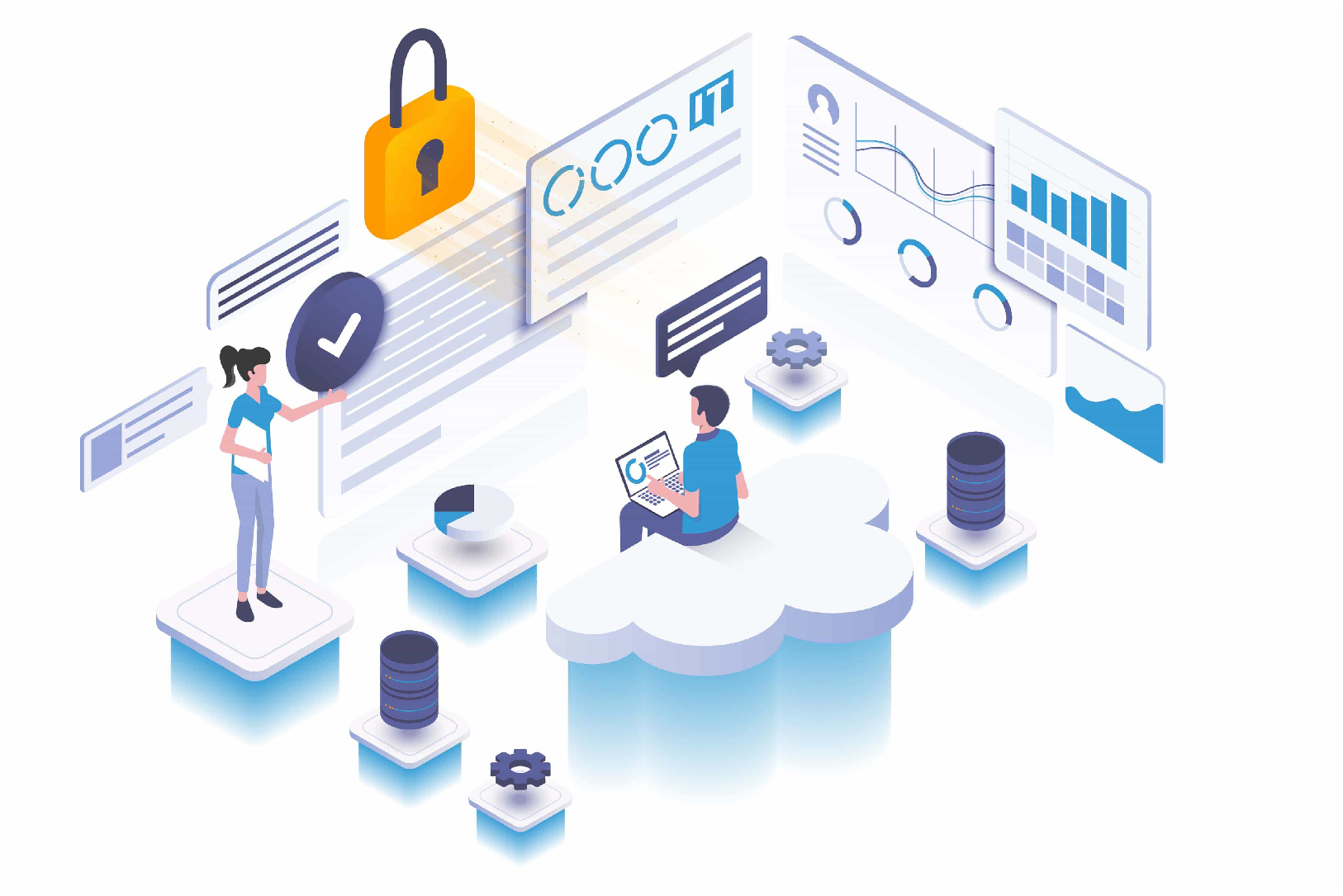The Dark Side of Digital Transformation
Digital transformation is a buzzword that has been thrown around for years, and for good reason. It's a powerful tool that can help businesses stay ahead of the curve, improve efficiency, and increase revenue. However, like any powerful tool, it can also have a dark side. The dark side of digital transformation refers to the unintended consequences that can arise when businesses undergo a digital transformation, such as cloud migration and IT modernization. These consequences can be far-reaching and have a significant impact on a business's bottom line.
The dark side of digital transformation is a topic that is often overlooked, but it's one that businesses need to be aware of. As "digital transformation is not just about technology, it's about people, process, and culture," says a leading expert in the field. This means that businesses need to take a holistic approach to digital transformation, one that takes into account the potential risks and challenges associated with it. One of the biggest risks associated with digital transformation is cybersecurity. As businesses move more of their operations online, they become more vulnerable to cyber threats. This is because "the attack surface of an organization increases exponentially with the adoption of cloud services," according to a recent report.
Cloud Migration Risks
Cloud migration is a key component of digital transformation, but it's not without its risks. One of the biggest risks associated with cloud migration is data sovereignty. This refers to the idea that data is subject to the laws and regulations of the country in which it is stored. This can be a problem for businesses that operate in multiple countries, as they may be subject to different laws and regulations. Another risk associated with cloud migration is compliance. This refers to the need for businesses to comply with various laws and regulations, such as GDPR and HIPAA. As "compliance is not just about checking boxes, it's about ensuring that your business is operating in a way that is consistent with the laws and regulations that apply to it," says a leading expert in the field.
The risks associated with cloud migration are not limited to data sovereignty and compliance. There are also technical risks to consider, such as downtime and service disruptions. These can have a significant impact on a business's operations, and can result in lost revenue and damaged reputation. To mitigate these risks, businesses need to take a careful and considered approach to cloud migration. This means assessing their current infrastructure and applications, and determining which ones are suitable for migration to the cloud. It also means developing a robust migration plan, one that takes into account the potential risks and challenges associated with cloud migration.
![]()
IT Modernization Complexities
IT modernization is another key component of digital transformation, but it's not without its complexities. One of the biggest complexities associated with IT modernization is the need for cultural and organizational change. This refers to the need for businesses to change the way they operate, and to adopt new ways of working. As "IT modernization is not just about technology, it's about people and process," says a leading expert in the field. This means that businesses need to take a holistic approach to IT modernization, one that takes into account the potential risks and challenges associated with it.
The complexities associated with IT modernization are not limited to cultural and organizational change. There are also technical complexities to consider, such as integration and interoperability. These can be a challenge for businesses that have a large and complex IT infrastructure, as they may need to integrate multiple systems and applications. To mitigate these complexities, businesses need to take a careful and considered approach to IT modernization. This means assessing their current infrastructure and applications, and determining which ones are suitable for modernization. It also means developing a robust modernization plan, one that takes into account the potential risks and challenges associated with IT modernization.
Cybersecurity Threats
Cybersecurity is a major concern for businesses that are undergoing a digital transformation. As "the threat landscape is constantly evolving, and businesses need to stay ahead of the curve to protect themselves," says a leading expert in the field. This means that businesses need to take a proactive approach to cybersecurity, one that includes measures such as encryption, firewalls, and intrusion detection. They also need to ensure that their employees are aware of the potential risks and challenges associated with cybersecurity, and that they are taking steps to protect themselves.
Some of the key cybersecurity threats that businesses need to be aware of include phishing, ransomware, and denial of service attacks. These can have a significant impact on a business's operations, and can result in lost revenue and damaged reputation. To mitigate these threats, businesses need to take a robust approach to cybersecurity, one that includes measures such as:
- Implementing robust security protocols
- Conducting regular security audits
- Providing employee training and awareness programs
- Implementing incident response plans
- Continuously monitoring and updating security systems
Change Management and Adoption
Change management and adoption are critical components of digital transformation. As "change management is not just about technology, it's about people and process," says a leading expert in the field. This means that businesses need to take a holistic approach to change management, one that takes into account the potential risks and challenges associated with it. They also need to ensure that their employees are aware of the potential benefits and challenges associated with digital transformation, and that they are taking steps to prepare themselves.
The key to successful change management and adoption is communication. Businesses need to communicate clearly and effectively with their employees, and ensure that they are aware of the potential risks and challenges associated with digital transformation. They also need to provide training and support, to help employees develop the skills they need to succeed in a digital environment. As "the key to successful digital transformation is to focus on the people, not just the technology," says a leading expert in the field.
Unlikely Parallels in Risk Management
The dark side of digital transformation is a complex issue that requires careful consideration and risk management. Interestingly, the concept of risk management is not unique to the IT industry, and can be observed in various aspects of life, including entertainment. As businesses navigate the challenges of digital transformation, they can draw inspiration from unexpected sources, such as the world of games, where players must weigh risks and rewards to achieve success. For instance, trying out a new game like Mafia Gold slot online (Play’n GO) can help individuals develop their risk assessment skills, which can be applied to real-life situations, including digital transformation. By embracing this mindset, businesses can better mitigate the unintended consequences of digital transformation and stay ahead of the curve.
Best Practices and Mitigation Strategies
So, what can businesses do to mitigate the unintended consequences of digital transformation? One of the best practices is to take a careful and considered approach to digital transformation, one that takes into account the potential risks and challenges associated with it. This means assessing their current infrastructure and applications, and determining which ones are suitable for migration to the cloud or modernization. It also means developing a robust plan, one that takes into account the potential risks and challenges associated with digital transformation.
Another best practice is to focus on cybersecurity. This means implementing robust security protocols, conducting regular security audits, and providing employee training and awareness programs. It also means continuously monitoring and updating security systems, to stay ahead of the evolving threat landscape. By taking a proactive approach to cybersecurity, businesses can reduce the risk of cyber threats, and protect themselves from the unintended consequences of digital transformation.
In conclusion, the dark side of digital transformation is a topic that businesses need to be aware of. It's a complex and multifaceted issue, one that requires a careful and considered approach. By understanding the potential risks and challenges associated with digital transformation, businesses can take steps to mitigate them, and ensure a successful digital transformation. As "digital transformation is a journey, not a destination," says a leading expert in the field. It's a journey that requires careful planning, robust execution, and a focus on the people, not just the technology.






